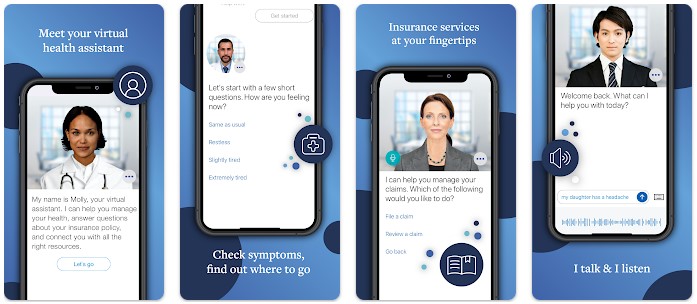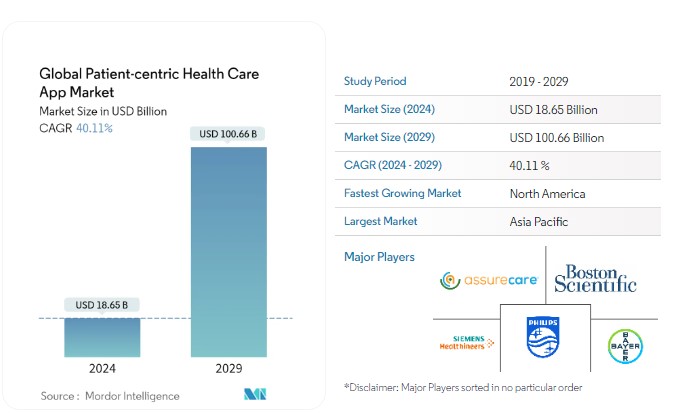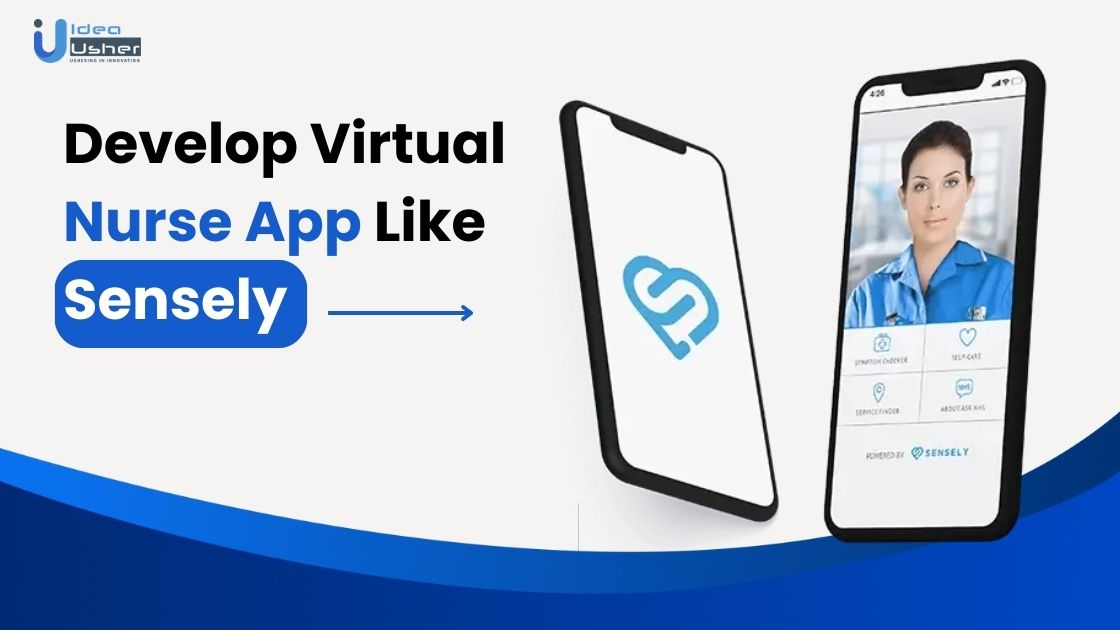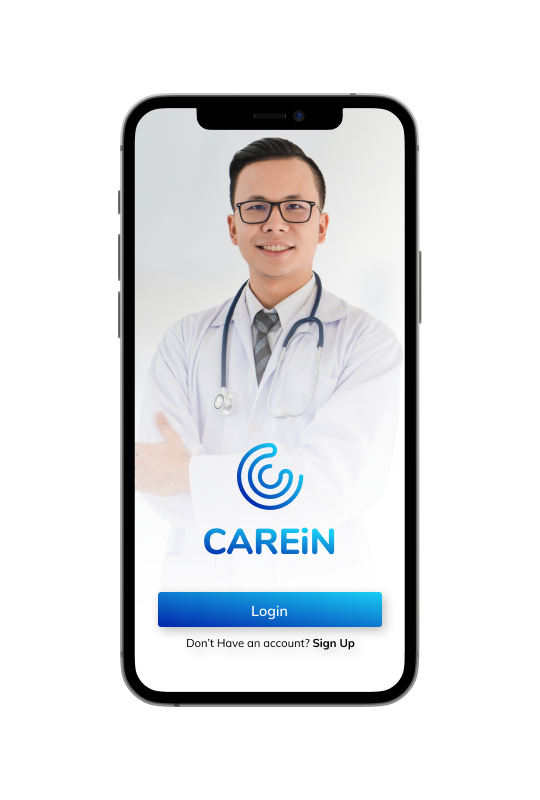The healthcare industry is currently facing a severe shortage of nursing professionals, a problem that is expected to worsen in the coming years. According to the World Health Organization, there is a projected shortfall of 5.7 million nurses worldwide by 2030. Moreover, as of 2024, 47.8% of hospitals reported a vacancy rate higher than 10%. This shortage puts tremendous pressure on existing healthcare providers, leading to increased workloads, longer patient wait times, and, in some cases, a decline in the quality of care. Although several apps have been developed to address these issues, many fall short. They often lack the depth, personalization, and accuracy needed to support both patients and healthcare providers effectively, resulting in incomplete guidance and missed symptoms.
Sensely, a virtual nurse app, offers a promising solution to these challenges. Using AI, Sensely provides personalized medical guidance and integrates seamlessly with existing healthcare systems to address many of the flaws seen in other apps. This blog serves as a detailed guide to developing a virtual nurse app like Sensely. It will cover the development process, key features, and cost considerations and will provide the insights needed to build a solution that truly helps mankind.
Sensely: Overview

Founded in 2013 by Adam Odessky and Dr. Ivana, Sensely represents a significant advancement in digital healthcare. The platform features an AI-powered avatar named “Molly,” designed to provide a highly personalized and empathetic user experience. Molly helps users manage chronic conditions, perform symptom checks, and schedule appointments, bridging the gap between human interaction and automated services.
Sensely extends its capabilities beyond individual patient support to improve overall healthcare workflows. It is utilized by patients, healthcare providers, pharmaceutical companies, and insurance firms to streamline processes and automate routine tasks. Integration with electronic health records (EHRs) ensures precise communication and efficient care coordination.
By combining advanced AI with empathetic design, Sensely enhances patient outcomes and reduces the strain on healthcare systems. Its innovative approach makes healthcare more accessible and personalized, setting a new standard for digital health solutions.
What Makes The Sensely App Unique?
Sensely distinguishes itself in the digital health arena with its comprehensive set of features designed to deliver personalized care:
- Symptom Checker: Sensely’s symptom checker allows users to assess their symptoms and, if necessary, connect directly with a live nurse for further guidance. This ensures a thorough evaluation and prompt support.
- Chronic Condition Management: The app provides dedicated support for managing chronic conditions such as Heart Failure, Diabetes, Asthma, and COPD. It offers personalized care plans to help users better manage their health.
- Self-Care Resources: Sensely includes an extensive repository of medical information, enabling users to access valuable resources for self-care and health management.
- Appointment Scheduling: The app simplifies scheduling in-person visits with clinicians, making it easier for users to book necessary appointments.
- Pharmacy Locator: Sensely features a pharmacy locator to help users quickly find nearby pharmacies for their prescription needs.
- Mental Health Support: The app offers support for mental health by addressing symptoms of depression, anxiety, stress, and insomnia, providing personalized assessments and solutions.
- Virtual Nurse Avatar “Molly”: Sensely’s AI-driven avatar, Molly, engages users through conversational interactions. Molly assists with both healthcare and insurance services, combining digital convenience with a personalized touch.
Sensely stands out for its ability to blend technology with empathetic care, creating a user experience that resonates deeply with its users. Users appreciate Sensely because it offers an integration of healthcare services through its virtual nurse avatar, Molly. This AI-driven feature provides a personal touch, making interactions feel more like a conversation with a human rather than a robotic system. The app’s comprehensive approach to managing health—whether through symptom checks, chronic condition support, or mental health resources—demonstrates its versatility and commitment to user well-being. Sensely’s ease of use, combined with its practical functions like appointment scheduling and pharmacy location, further enhances its appeal. Users find that Sensely not only meets their healthcare needs but does so in a way that feels accessible and caring, making it a preferred choice for many.
Key Market Takeaways For Nursing Apps
The demand for qualified nurses is projected to rise sharply in the coming years. According to the U.S. Bureau of Labor Statistics, an additional 177,400 Registered Nurses will be needed between 2022 and 2032. This increase is driven by an aging population and growing healthcare needs. The widening gap between the supply of nurses and the demand for their services presents a significant opportunity for innovative solutions in this sector.

In terms of market growth, the global nursing apps industry is expected to expand from $2.36 billion in 2024 to $4.1 billion by 2030, with a compound annual growth rate (CAGR) of 9.6% during this period. Similarly, the global market for patient-centric healthcare apps is estimated to grow from $18.65 billion in 2024 to $100.66 billion by 2029. This represents a substantial CAGR of 40.11%, highlighting the increasing investment and interest in technology-driven healthcare solutions.
Business And Revenue Model Of Sensely
Sensely operates within a Business-to-Business (B2B) framework, partnering with healthcare organizations, insurance companies, and pharmaceutical firms. The company’s revenue model is built around several key components:
1. Licensing Fees:
Sensely’s primary revenue comes from licensing its platform to organizations. The licensing fees are structured based on the number of users or other performance metrics, providing a scalable and adaptable revenue stream that aligns with the size and needs of each client.
2. Data Analytics:
Sensely uses the data collected from its platform to offer insights into user behavior, health trends, and treatment outcomes. This data can be sold or shared with partners, adding value through detailed analytics.
3. Value-Based Services:
The company sometimes engages in value-based agreements, where its platform is used to enhance health outcomes and reduce costs. Sensely may receive a portion of the savings or a fee based on the results achieved.
4. Enterprise Solutions:
Sensely offers its platform to large enterprises, including insurance companies, hospital systems, and pharmaceutical clients. These solutions improve member engagement, streamline operations, and provide personalized healthcare services.
5. Software Development Kit (SDK):
Sensely provides a low-code SDK for integrating its virtual assistant capabilities into other platforms. This SDK supports deployment across various channels, including websites and mobile apps.
6. Recurring Revenue:
Sensely’s subscription-based model generates ongoing revenue. Enterprises pay regularly for continued access to the platform’s features and services, ensuring a steady income stream that supports the company’s growth and innovation.
7. Custom Content And Services:
Sensely offers tools and support for creating customized content within the platform. This customization allows clients to provide relevant and engaging interactions specific to their industry, improving the overall user experience and satisfaction.
8. Global Presence:
With offices in San Francisco, London, Minsk, and Manila, Sensely has a broad international footprint. This global presence enhances its ability to deliver high-quality service and support to clients across different regions, facilitating scalable solutions.
9. Strategic Partnerships:
Sensely collaborates with major insurance and healthcare providers, such as Allianz, AXA, and NHS. These partnerships expand its market presence and strengthen its industry position.
What Features Make Sensely App So Popular Among Its Users?
Sensely stands out in the healthcare app market due to its distinctive and highly appreciated features:
1. Engaging AI Interaction:
Sensely uses An advanced virtual nurse avatar that engages users in natural, conversational interactions. This AI-driven approach makes the user experience more engaging and human-like compared to traditional text-based interfaces.
2. Symptom Assessment And Guidance:
The app allows users to evaluate their symptoms through an easy-to-use interface and, if needed, connect with a healthcare professional. This direct link to medical advice helps users receive timely and accurate guidance.
3. Chronic Condition Management:
Sensely provides personalized support for managing chronic illnesses, including diabetes, asthma, and heart disease. The app offers personalized care plans and ongoing monitoring to help users manage their conditions effectively.
4. Comprehensive Health Information:
The app provides a comprehensive database of health information, enabling users to access detailed explanations of medical conditions and treatments. This feature helps users make well-informed health decisions and understand their symptoms more thoroughly.
5. Convenient Appointment Scheduling:
Sensely simplifies the process of scheduling healthcare appointments. Users can arrange consultations with healthcare providers directly from the app, streamlining access to medical services.
6. Pharmacy Locator:
Sensely integrates a pharmacy locator that helps users quickly find nearby pharmacies. This tool streamlines the process of obtaining medications, ensuring users can easily locate and access the drugs they need.
7. Mental Health Support:
Sensely offers robust mental health support, including assessments and personalized recommendations. The app addresses common issues such as stress, anxiety, and depression, providing users with customized strategies and resources to manage their mental well-being effectively.
8. Remote Consultations And Education:
The app features telemedicine capabilities and educational content, providing users with remote consultation options and valuable health information to enhance their overall healthcare experience.
Innovative Features That Can Enhance An App Like Sensely
To further elevate an app similar to Sensely, several advanced features could be integrated to provide a more comprehensive and efficient healthcare experience:
1. Electronic Health Records (EHR) Integration:
By linking with EHR systems, the app can access detailed patient histories, including previous illnesses, allergies, and current medications. This integration ensures that users receive informed and personalized care while healthcare professionals have a complete view of patient health data.
2. Telehealth Integration:
Seamlessly connecting with telehealth platforms allows users to schedule and conduct virtual consultations with healthcare providers. This feature enhances accessibility to specialized medical care, reducing the need for in-person visits and expanding healthcare access.
3. Wound Care Assistance:
For users managing wounds, the app can provide step-by-step guidance on proper wound care practices. This includes instructions for dressing changes, infection prevention, and indicators for when professional medical help is required.
4. Pediatric Care Support:
Customizing advice for parents, the app can offer information on common childhood illnesses, developmental milestones, and safety recommendations. This feature supports parents in managing their children’s health and development more effectively.
5. Advanced Symptom Triage:
Using advanced algorithms, the app can deliver precise symptom triage and diagnostic suggestions. This helps users identify potential health issues and directs them to the appropriate level of care.
6. Emotion Analysis:
Incorporating AI to assess user emotions through voice and text inputs allows the app to deliver more empathetic and personalized responses. This feature enhances user engagement by addressing emotional states as part of the healthcare experience.
7. Virtual Admissions And Discharges:
Streamlining patient admissions and discharge processes through virtual channels can save time and resources. This feature simplifies administrative tasks and improves overall efficiency in healthcare settings.
8. Medication Adherence Monitoring:
Advanced tracking tools can be implemented to monitor users’ medication adherence. This includes automated reminders and alerts to ensure users follow their prescribed medication schedules consistently.
Development Steps For Virtual Nurse App Like Sensely
Developing a virtual nurse app similar to Sensely involves several essential steps to ensure effectiveness and user satisfaction. Here’s a detailed guide:
1. Empathy-Driven Avatar Design:
Start by designing avatars that simulate human interaction. Use AI to analyze users’ emotions through their text and voice inputs. This approach helps the avatars provide responses that are empathetic and suited to the user’s emotional state, enhancing the overall user experience.
2. Natural Language Processing (NLP):
Implement advanced NLP techniques to accurately understand and respond to user queries. Incorporate speech-to-text and text-to-speech functions to ensure smooth and natural communication, making interactions more user-friendly.
3. Emotion Recognition Technology:
Integrate emotion recognition tools to identify and respond to users’ emotional states. Analyze vocal tones and text inputs to detect feelings such as stress or anxiety, allowing the app to offer more personalized support based on these emotional insights.
4. Standardized Assessment Protocols:
Use standardized assessment methods to ensure consistent and reliable data collection. Automate routine checks and evaluations to streamline the process and maintain high-quality data accuracy.
5. EHR/EMR System Integration:
Ensure the app integrates smoothly with Electronic Health Records (EHR) and Electronic Medical Records (EMR) systems. This integration allows for real-time updates on patient health information and supports secure data management.
6. AI-Powered Symptom Checker:
Develop an AI-based symptom checker to provide accurate health assessments based on user inputs. Keep the symptom checker updated with the latest medical knowledge to ensure its recommendations are current and useful.
7. Interactive Health Education Modules:
Create engaging health education content that adapts to different learning preferences. Provide users with clear and informative material about health conditions and treatments, helping them make better health decisions.
8. Wearable Device Integration:
Include functionality for connecting with wearable health devices to track vital signs and health metrics in real-time. Offer alerts and notifications based on data from these devices to support timely health management.
9. Telemedicine Integration:
Integrate telemedicine features to facilitate virtual consultations with healthcare professionals through the app. Simplify the scheduling process for appointments and follow-up visits, improving access to healthcare services.
Tech Stack For Sensely Clone App Development
Developing an app like Sensely requires a combination of advanced technologies to ensure seamless functionality, user engagement, and compliance with healthcare standards. Here are some unique tech stacks specifically customized for a virtual nurse app like Sensely:
| Category | Tech Stack |
| Frontend Development | React Native, Three.js, Emotion |
| Backend Development | Node.js with Express.js, GraphQL, MongoDB |
| AI and NLP Integration | TensorFlow, spaCy, Dialogflow |
| Emotion Recognition | Affectiva, BeyondVerbal |
| Integration with Wearable Devices | Bluetooth Low Energy (BLE), Apple HealthKit, Google Fit |
| Telemedicine Integration | Twilio, WebRTC |
| Security and Compliance | OAuth 2.0, HIPAA Compliance Tools |
| Analytics and Monitoring | Google Analytics, Mixpanel |
Key Considerations For Virtual Nurse App Development
Here are some specific considerations in developing a virtual nurse app like Sensely:
- The app needs advanced AI and NLP to understand and respond to user questions accurately. It should also include tools to detect and respond to user emotions, making interactions more personal and supportive.
- The app must follow healthcare regulations like HIPAA and GDPR to protect patient data. This means ensuring secure data storage and transmission and regularly updating security measures.
- The app should connect seamlessly with Electronic Health Records (EHR) and Electronic Medical Records (EMR) systems. This integration allows real-time updates and accurate patient information while ensuring data compatibility and integrity.
- Designing realistic and interactive avatars helps build trust with users. High-quality animations and interactions are essential to make users feel comfortable and engaged with the app.
- The app’s infrastructure must be able to handle a growing number of users and data. It should be designed to maintain good performance even under heavy use, with effective load balancing and data management strategies.
Cost Of Developing A Virtual Nurse App Like Sensely
Here’s a detailed breakdown of the actual cost of developing a virtual nurse app like Sensely, with cost ranges for each component:
| Component | Description | Minimum Cost | Maximum Cost |
| Research and Planning | Market research, requirement analysis, and ensuring regulatory compliance | $500 | $5,000 |
| UI/UX Design | Designing user interface and user experience | $500 | $3,000 |
| Frontend Development | Developing the app’s frontend for various platforms | $1,000 | $22,000 |
| Server Setup and Configuration | Setting up and configuring servers for backend operations | $500 | $5,000 |
| Database Development | Developing and managing databases for storing user data | $500 | $5,000 |
| API Development | Creating APIs for communication between frontend and backend | $500 | $8,000 |
| AI and NLP Integration | Integrating AI and natural language processing for understanding user queries | $1,500 | $15,000 |
| Emotion Recognition | Implementing tools to detect and analyze users’ emotional states | $1,000 | $10,000 |
| EHR/EMR Integration | Integrating with Electronic Health Records and Electronic Medical Records | $1,000 | $5,000 |
| Wearable Device Integration | Connecting with wearable devices to monitor health metrics in real-time | $500 | $5,000 |
| Telemedicine Integration | Enabling virtual consultations with healthcare professionals | $1,000 | $5,000 |
| Testing | Testing the app’s functionality to ensure it works as intended | $500 | $3,000 |
| App Deployment | Deploying the app to app stores and healthcare networks | $500 | $2,000 |
| Ongoing Maintenance and Updates | Providing ongoing maintenance and updates | $500 | $7,000 |
| Total Cost Range | $10,000 | $100,000 |
Factors Affecting The Cost Of Developing An App Like Sensely
Here are some more specific factors that can influence the cost of developing a virtual nurse app like Sensely:
- The level of medical information the app needs to understand and process plays a significant role in the cost. Developing AI that accurately handles this information requires advanced algorithms and careful data management.
- High-quality data is essential for training AI models. The cost increases with the amount and quality of data needed to ensure the app functions accurately and reliably.
- The number of healthcare systems the app must connect with affects development costs. Each connection, particularly with systems like EHR or EMR, requires customized development and thorough testing.
- Following standardized data formats like HL7 FHIR can help with integration but may still need custom development, which impacts cost.
- The complexity of the NLP models needed to understand user questions and give correct responses is a major cost driver. The choice of machine learning algorithms and the customization needed also contribute to the cost.
- Adding features like real-time video calls and remote patient monitoring, including integration with wearable devices, increases the development effort and cost.
- Creating algorithms for specific tasks, such as mental health assessments, requires specialized skills, which can add to the cost.
- Making sure the app complies with data privacy laws like GDPR and HIPAA is crucial. This involves careful planning and development, which also contributes to the cost.
Top Revenue-Generating Methods That Are In Trend For Virtual Nurse Apps
Virtual nurse apps have become integral to modern healthcare, offering multiple revenue-generating opportunities. Below are the most effective methods currently in use:
1. Subscription Services For Healthcare Providers
Offering subscription-based access to healthcare providers and insurance companies is a primary revenue stream. These subscriptions grant access to advanced features like patient management tools, real-time monitoring, and AI-driven analytics, helping organizations improve care and streamline operations.
2. Direct-to-Consumer Offerings:
Charging users directly for services such as virtual consultations, medication management, and personalized health advice is another significant revenue source. This model appeals to individuals seeking convenient and affordable healthcare options.
3. Strategic Partnerships:
Collaborating with healthcare providers, pharmaceutical companies, and insurance firms can create joint ventures and revenue-sharing opportunities. These partnerships enhance the app’s offerings, increase its reach, and diversify its revenue streams.
4. Data Monetization:
With the increasing demand for data-driven insights, virtual nurse apps can generate revenue by selling anonymized health data to research institutions and pharmaceutical companies. Offering data analytics services to third parties is another way to monetize this valuable resource.
5. Telehealth Services:
Providing telehealth features like video consultations and remote patient monitoring can be highly profitable. These services cater to the growing demand for virtual healthcare, enabling patients to receive care from their homes while ensuring continuous monitoring of chronic conditions.
6. Chronic Disease Management Programs:
Developing specialized programs for managing chronic conditions such as diabetes, hypertension, and mental health disorders can attract a steady user base. These programs typically include regular check-ins, personalized treatment plans, and educational resources, providing ongoing support to patients and generating consistent revenue.
7. Corporate Wellness Programs:
Partnering with companies to offer wellness programs to employees is another lucrative avenue. These programs can include health assessments, personalized coaching, and wellness challenges, helping companies promote employee health while generating revenue for the app.
8. Health Coaching And Educational Content:
Offering personalized health coaching and educational content can attract users looking for personalized advice on lifestyle changes, disease prevention, and overall wellness. This service can be offered as a premium feature, appealing to users willing to pay for specialized support.
Conclusion
Developing a virtual nurse app similar to Sensely represents a valuable opportunity to tackle the ongoing shortage of nursing staff and improve healthcare delivery. By utilizing technologies like AI, Natural Language Processing, and emotion recognition, such an app can provide personalized and empathetic care that fills gaps left by traditional methods. It can effectively manage chronic conditions, offer detailed health information, and support mental well-being. As the need for innovative healthcare solutions grows, investing in a virtual nurse app not only aligns with current trends but also plays a crucial role in enhancing patient care and operational efficiency.
Develop A Virtual Nurse App Like Sensely With Idea Usher
Create a virtual nurse app like Sensely with our expertise and benefit from over 50,000 hours of coding experience. Our team employs advanced technologies, including AI and emotion recognition, to deliver personalized and empathetic care. Partnering with us ensures your app will effectively support chronic condition management, provide valuable health information, and enhance patient well-being, all while improving healthcare efficiency. Contact us today to get started!
Work with Ex-MAANG developers to build next-gen apps schedule your consultation now
FAQs
How long does it take to develop an app like Sensely?
Developing an app like Sensely, which incorporates advanced features such as AI and emotion recognition, typically takes around 6-12 months. This timeframe accounts for defining complex functionalities, designing an intuitive interface, coding, and thorough testing to ensure the app meets high standards of performance and accuracy.
How do you develop an app like Sensely from scratch?
To develop an app like Sensely from scratch, start by outlining its core features, such as virtual nursing and emotion recognition. Next, create detailed design and functionality plans. Proceed with coding using technologies like AI and NLP, followed by extensive testing to ensure reliability and accuracy. Finally, the app will be deployed and maintained with updates and user feedback.
What are the best app development technologies for a Sensely-like app?
For an app like Sensely, which requires advanced capabilities like AI and emotion recognition, technologies such as TensorFlow or PyTorch for AI, as well as Natural Language Processing (NLP) tools, are essential. Using frameworks like React Native for cross-platform development can streamline the process, while cloud services like AWS or Azure support scalable backend operations.





















